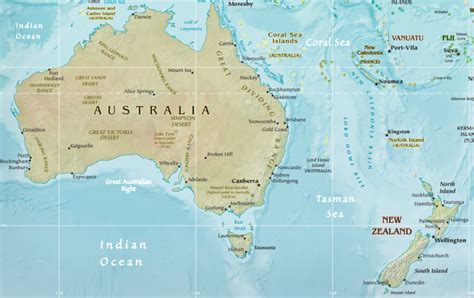
A350 1000 Cathay Pacific MSN118 on ground RTO scaled
Airbus has no intention of further stretching the A350-1000 to bridge the gap to the out-of-production A380. The current size of the widebody aircraft is the right one and needs no extension of the fuselage, the airframer said during an online widebody product presentation on Tuesday. Airbus has no appetite to further stretch the A350.
“We consider that the -1000 is large enough. When you look at the replacement of the 777-300ERs which is ahead of us, the -1000 is a perfect size, with more range and much better efficiency. So this is the natural platform. This is where we see the market in the next three years,” said Florent Massou dit Labaquere, Head of the Airbus Widebody Programme.
Some six years ago, then Chief Commercial Officer John Leahy said that Airbus was considering a stretched A350, internally called the A350-2000. “There is no -2000 study ongoing at the moment. That was done in the past in very specific conditions, but we believe that the -1000 is the right size, to make sure that airlines operating the -900 can grow upwards and replace the triple sevens.”
Asked by AirInsight if the gap between the A350-1000 with 410 seats and the A380 with 500-600 seats isn’t too big, Head of Marketing Stan Shparberg said: “Today, the A350-1000 is the flagship product. We believe it has got the right ratio of risk versus reward, the number of seats you can have in the premium cabin, and Economy Class configuration. With the latest cabin improvements, we have been able to widen the cabin, which allows us to go to ten-abreast seating. This gives us an extra twenty to thirty seats that we can add, which obviously closes the gap to the A380. Do we really need to close the gap to the A380, do we need double-deckers? I think the A350-1000 is very capable to take over on the A380s and 777-300ERs and be the aircraft of choice for our customers.”
Tenth anniversary
Today marks the tenth anniversary of the first flight of A350-900 MSN001 on June 14, 2013. Airbus has sold 755 A350-900s, 173 A350-1000s, and 39 A350F full freighters. This gives Airbus a market share of 48 percent in the widebody market against Boeing and a 42 percent share in the full freighter segment against the Boeing 777-8F.
Return of the A350-900 after her first flight on June 14, 2013. (Airbus)
Reflecting on that, Shparberg said: “I think we are doing everything we need to do. (…) We do have the latest and most efficient widebody family out there, with great operational reliability. Yes, we can always do better and strive to do better, but the situation is not as one-sided as it may seem by some.”
Since entry into service in 2014, the A350 has received various upgrades. For instance, the Maximum Take-Off Weight has grown from 268 tonnes to 283 tonnes for the -900, while MTOW for the -1000 has increased from 308 to 319 tonnes. Last October, Airbus introduced the latest production standard that includes a 400-kilogram weight reduction for the A350-900 and even 600 kilograms for the -1000 thanks to the use of more advanced materials. A re-arrangement of the rear bulkhead and the galleys has increased the usable space inside the cabin. Straighter side walls result in ten centimeters of extra space at the armrest level.
Asked if Airbus has planned another MTOW increase to match the recently announced weight increase for the Boeing 787, Massou dit Labaquere said there are no plans for that. “What you see is that the 787-10 is to increase the weight to capture part of the gap that there is already against the A350-900. We have a certain range advantage for the -900, particularly over the -10, and that gap is not closed by far by the recent weight increase. We keep the lead on that. In the future, we will see.”
A350F upgrade
Even before the first A350F is being assembled, Airbus has already found additional payload weight. From 109 tonnes that were announced after the launch of the freighter in 2021, the maximum payload weight goes up to 111 tonnes. Not much, but welcome anyway.
Except for the seven A350Fs ordered by launch customer Air Lease Corporation, all freighters have been purchased by airlines. But Shparberg is positive that more lessors will order the type. “There is definitely an appetite from lessors because it is a great asset. The e-commerce market is growing and a lot of newcomers are coming into this space, like CMA CGM, like companies in China and the US where they definitely require the support of lessors. That’s why we strongly believe that there will be a market for freighters and passenger aircraft.”
A330neo
While the birthday kid during the event was the A350, Airbus did its best to highlight the other member of the widebody family: the A330neo. Over 100 have been delivered out of 277 -900s and twelve -800s are on order. Thanks to a durability enhancement program by Rolls-Royce, the Trent 7000s have now much-increased wing on time before they need inspections.
The A330neo will soon get some of the same upgrades the A350 has got as part of the New Production Standard. This includes optimized low-speed performance, enhanced take-off configurations, and quicker gear retraction. These are software upgrades only that have proven themselves on the newest A350s. Incremental developments will be coming, with Airbus planning a Multirole Tanker version of the A330-800 in 2026 as a replacement for the existing A330-200.
With just twelve sales, the A330-800 can hardly be regarded as a commercial success so far. It isn’t something Stan Shparberg is concerned about, as he thinks the time for this aircraft will come: “The reason we haven’t seen as many orders is that the replacement wave for the A330-200 has not begun quite yet. We are seeing that come very, very soon but it has been delayed somewhat by the Covid crisis. The A330-800 is a great opportunity for single-aisle operators to get into the widebody market. That’s what we are seeing in the market, with people really upgauge and going into the widebody market.”
Order influx coming
CCO Christian Scherer said recently that he sees a flux of widebody orders coming. Shparberg agrees: “I think the demand that we are seeing for widebody travel and widebody aircraft is clearly something that is geared across the globe. We see very, very strong demand and the capacity is not there. We also have an opportunity, with the competitor product being delayed. So we definitely see ourselves coming to a point when we need to review our production rates and increase those, where Florent and the team are working on, to make sure we achieve that demand.”
The current plan is to ramp up the production of the A350 from six to nine per month by the end of 2025 and that of the A330 from three to four per month in 2024.
Views: 310







It think a A350-1000 stretch is in the long term planning. Just not required, needed for years.
The current offering, backlog seems ok. Disturbing, complicating it with a new version doesn’t have much advantages.
New RR engines, aging fleets will bring it up again in the future.
Airbus sales probably sees the troubled 777-9 development as a gif that keeps giving.. Wait what EK has to say next week.